Romance Language Collections
Serials reductions as part of the life cycle
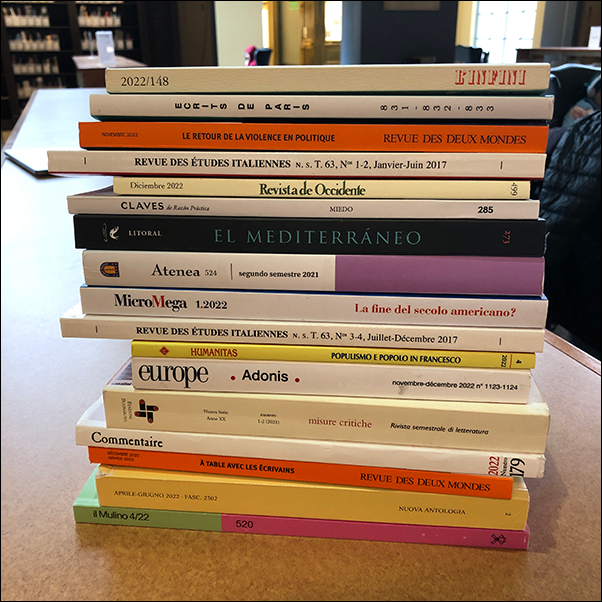
You need not fret about L’Infiniti, Écrits de Paris, Revue des deux mondes, Revue des études Italiennes, Revista de occidente, Claves de razón práctica, El Mediterráneo, Atena, MicroMega, Humanitas, Europe, Misure critiche, Commentaire, Nuova antologia, Il Mulino, and many more journals in the Southern European collection. These have evaded cancellation for now in the second year of a two-year planned reduction of UC Berkeley Library’s acquisitions and licensing budget.
This week, the Library has shared with the campus via CALmessages a complete list of proposed serials cancellations for public comment until May 12. For 2023/24, the budget for recurring annual costs such as subscription databases, journal subscriptions, ebook and journal packages will be reduced by $850K. The Arts and Humanities portion of the serials reduction came to about $165,000. Much of this was met through a renegotiation of the price share for a statewide Taylor & Francis journal package that met about $65,000 of our target. The remaining $100,000 came from the subject funds. (For Latin American and Caribbean Studies, please scroll down to the Social Sciences grouping.)
The proposed list of cancellations was developed to minimize the impact on the community by focusing on duplicative subscriptions; journals and databases that are available open access or in other ways; and the most seldomly accessed journals and databases. Together, subject librarians have reviewed all subscriptions and prioritized retaining titles based on strength of need and available alternatives for access. Across disciplines, the total number of titles came to 1,204 which includes large packages. These ranged from very cheap (Annali di statistica @ $9.67/year) to exorbitant (Greenwire for $17,544/year).
These exercises are never easy but have become a regular part of the scholarly resources life cycle as academic libraries continue to endure rapidly declining budgets for an expanding terrain of expensive intellectual materials in both print and digital formats. The last serials reduction was in 2018 in the amount of $1.5M. At the beginning of this year, the Library reduced its discretionary budget (mostly for books) by $850K and two years earlier by $1M.
Including our recent reductions in 2018 and 2020, this year’s serials reduction will bring the total annual reduction in acquisitions and licensing to $4.425 million – an approximately 35% reduction of campus, state, and unrestricted funding for collections since 2016. Without an influx of funding from the campus and the state, the UC Berkeley Library can expect to see another round of budget cuts in the near future.
For the month of April, I will be posting on Instagram nearly every day the cover of a different journal in the Romance languages that we are retaining access to for now in either print or digital form.
Four Notes on our Love of Books and our Need for Libraries
Four Notes on our Love of Books and our Need for Libraries
by Henrike Christiane Lange, Associate Professor of History of Art and Italian Studies, University of California, Berkeley
UC Berkeley, Spring Term 2023

A Note on Historical Books
The historical books in our collection are honeycombs of the centuries. They provide us not just with their specific knowledge from other times, but also with new insights about our own historical situation that we can only fully appreciate when seeing it compared to other eras. The material presence of historical books offers a shared experience with earlier readers – the readers of their time. Finally, the very awareness of the books’ own different time and place of origin generates a friction which allows us to progress with better consciousness and determination in our own timelines – not to be free-floating and lost in space, without time and context. The library thusly can both anchor us and liberate us at the same time in this process of discovery. Finally, a library of such historical objects for teaching and training is more than the sum total of the books. It is the select and familiar presence of those books together in an organized space, carved out of the chaos of the rest of the world as a refuge for the calm immersion into the records of others’ long-gone thoughts that spark the magic of understanding.
A Note on Scholarly Monographs
Monographs are little time machines: In a matter of hours, one can walk with the author through a specific and manageable field of knowledge, acquired over years, condensed yet decompressed, presented in a reader-friendly way, and focused on a valuable question. A monograph is not as short and shallow as a blog post, and it is not as limitless and infinite (therefore ungraspable) as the whole wide virtual cosmos of the world wide web. In a scholarly monograph, an author explores at the speed of the reader’s reading time what they have learned from having done years and decades of work of researching, reading, sorting, evaluating, weighing, expressing, writing, re-writing, and editing under the harsh conditions of double-blind peer review. This model can help enable readers and researchers to produce, eventually, their own unique contribution to a field in the form of a book – sent into the world to find its readers, way beyond the personal sphere of its author. The department library is the space to encounter and compare these kinds of books (at the height of their training, graduate students are expected to read up to a dozen of monographs per week in order to grasp their different styles, approaches, rhetoric, and strategies of presentation of the material).
A Note on Art History Libraries
Art history libraries have a double importance for the discipline, as they contain both secondary and primary sources: Books in art history research are not only containers of written, textual knowledge, or simple records of visual material, but also often serve as primary materials when they contain large or unique plates, a corpus of drawings, of maps, or of prints. They provide core materials such as large folio-sized works that outdo our screens, or plates that we use for comparisons in teaching around the table. Art History Libraries such as ours in Doe Library hold original documents that are themselves primary sources also when it comes to photo books and artist books, and the library’s rooms filled with books are our equivalent of a “lab” space. Large prints, maps, and photos need to be spread out on folio-size accommodating tables and compared, arranged, discussed with small groups in our training of emerging experts in our fields. The access to these physical materials together with small groups of students in a dedicated library space is an irreplaceable feature of the training of future architects and art historians. As is true for all our campus libraries, such specialized department libraries are not only collections somewhere without roots in time and space, but carefully grown, cultivated, specific places that have been assembled only here for a likewise growing and developing student population according to their specific needs.
A Note on Berkeley’s Libraries in the Now-Moment
Entering someone’s personal research library, fascinatingly, can feel like entering someone else’s brain – and to move about as if in a silent conversation with them, following their lead or jumping between sections and fields of knowledge, seeing the surprising and original connections that someone else made a long time ago, and getting inspired. The same applies to the experience of wonder and discovery in the large departmental, field-specific library: when we enter our library, we truly enter the good will, deep knowledge, and great care that generations of librarians, faculty, staff, and students have left there in invisible traces – in the objects as much as in the coherence, distribution, arrangement, and context of the objects. This is why off-campus storage removes the most important component from research, teaching, and learning; the eureka moments that can only happen on the quiet days alone in the library. We sometimes forget that not only the books and their authors speak to us, but all the caretakers and champions of the books that helped them find their way into our collection. As disciplines in the arts and humanities in a worldwide context that is hostile to the slow, deep, focused, and truly generative conditions of our work, we need those moments more than ever – not just the researchers, but especially our brilliant, insightful students.
Spring bloom: new ebooks from OpenEdition
It’s that time of year when we choose new ebook titles from OpenEdition. Below you will find a few that have made it to the list. Please send other recommendations to the Librarian for Romance Languages by April 1.
Since 2014, the UC Berkeley Library has supported this initiative based at the Université d’Aix-Marseille to open scholarly content from Europe and France in particular to the world. The Freemium program allows the UC Berkeley community to participate in an acquisitions policy that both supports sustainable development of open access (OA) and that respects the needs of teaching, research and learning communities. With our participation, faculty, students, and other researchers can benefit from greater functionality while making it possible for anyone in the world to view in html and in open access 70% of the ebook catalog of more than 13,000 titles.
Through the Freemium model, UC Berkeley gains access to preferred formats (pdf, epub, etc.) with no DRM quotas and seamless access to the content with UC Library Search.
PhiloBiblon 2023 n. 2 (marzo). Fuero parece, Real lo es: BH MSS 345 de la Biblioteca Histórica ‟Marqués de Valdecilla”
Mónica Castillo Lluch
Université de Lausanne
El manuscrito BH MSS 345, custodiado en la Biblioteca Histórica ‟Marqués de Valdecilla” de la Universidad Complutense de Madrid, fue catalogado bajo los títulos ‟Libro del fuero que dio el Rey don Alfonso a la uilla de Sant fagunt” y ‟Fuero de Sahagún”, por comenzar su texto de este modo: ‟Este es el libro del fuero que dio el Rey don Alfonso a la villa de Sant Fagunt” (f. 4r, v. imagen 2). Como Fuero de Sahagún se encuentra hasta hoy (18 de marzo de 2023) en el catálogo de la Biblioteca de la Universidad Complutense de Madrid y hasta hace varios días así en PhiloBiblon, bajo BETA texid 2443 con el registro BETA cnum 9301.
Ahora bien, la catalogación de este códice como Fuero de Sahagún es errónea, pues el texto que contiene es el del Fuero Real, como anuncian inequívocamente los índices de sus cuatro libros (ff. 1v-3v) y como revela la lectura del texto. El códice procede del Museo-Laboratorio jurídico ‟Ureña” de la Facultad de Derecho de la Universidad Central (lleva su sello en diversos folios) y por ello sorprende que hasta hoy no haya sido identificado como testimonio del Fuero Real, lo que se comprueba consultando la nómina de manuscritos que ofrecen Martínez Diez en su edición (1988: 22-72) y Fernando Gómez Redondo y José Manuel Lucía Megías en el Diccionario filológico de literatura medieval española (2002: 11-15). Consecuentemente tampoco ha figurado hasta ahora este testimonio entre los que da PhiloBiblon del Fuero Real (BETA texid 1006), error que ya se ha corregido, enlazando el registro con el testimonio en BETA cnum 9301.
Dos razones explican la catalogación defectuosa: de un lado, el título de Fuero Real es moderno –de finales del siglo XV-, y los códices antiguos no lo llevaban; en los pocos códices en los que aparece un título este es el de Libro del fuero, Libro del fuero de las leyes, Libro de las leyes, Libro de Flores o Flores (Martínez Diez 1988: 78-79 y BETA texid 1006). De otro, numerosos códices del Fuero Real se destinaron a localidades concretas (Martínez Diez 1988: 80-91), mediante la fórmula inicial de ‟Libro del fuero que dio el Rey don Alfonso a Burgos, Valladolid, Santo Domingo, Carrión… ”, lo que provoca confusión a la hora de identificar el texto, que se puede interpretar como fuero de esa villa (otro ejemplo del mismo tipo de error es que el códice de Filadelfia del Fuero Real (BETA cnum 3676) aparece como Fuero de Burgos en el CORDE; cf. Rodríguez Molina y Octavio de Toledo y Huerta 2017: 29).
Por desgracia al códice BH MSS 345 le faltan los últimos folios y, por tanto, la data, por lo que nunca sabremos si en la fórmula habitual ‟Este libro fue fecho e acabado en Valladolit por mandado del rey don Alfonso … días andados del mes de… era de 1293” figuraba la fecha de 18 de julio, la de 25 de agosto u otra de ese año 1255. Si nos atenemos al otro ejemplar que se ha conservado del Fuero Real destinado a Sahagún (esc. Z-II-8), que Martínez Diez (1988: 44) fecha de mediados del siglo XIV, y asumiendo que este fuera copia de BH MSS 345 –lo que está por probar–, esa fecha habría sido el 30 de agosto (o el 25, si hubo error de lectura, cf. Martínez Diez 1988: 83). En cualquier caso, merece la pena mencionar que el verdadero Fuero de Sahagún concedido por Alfonso X (BETA texid 2443 en PhiloBiblon) el 25 de abril de 1255, que se conserva en un privilegio rodado original (AHN, Clero Regular-Secular: car. 917, n. 13 BETA cnum 3569), en su dispositivo hace mención de que el rey otorga a la villa el Fuero Real como supletorio: ‟todas las otras cosas que aquí nõ son escriptas, que se judguen todos los de Sant Fagund, cristianos e judíos e moros pora siempre por el otro fuero que les damos en un libro escripto e seellado de nuestro seello de plomo” (texto apud BNE MSS/18128, f. 80v. Cf. Barrero García 1972: 404 y Martínez Diez 1988: 92 y 108).
¿Podría ser BH MSS 345 ese libro del Fuero Real escrito y sellado en 1255? Sin pretender dar una respuesta definitiva a pregunta tan importante en esta nota, cabe aquí al menos apuntar que rasgos textuales, codicológicos, paleográficos y diplomáticos de este códice revelan su antigüedad y hacen verosímil que pueda tratarse de un testimonio salido de la cancillería real en el verano de aquel año.
Desde el punto de vista textual, de confirmarse que BH MSS 345 es el arquetipo de Z-II-8, la calidad del texto de este último (‟ofrece un texto excelente del Fuero Real”, según Martínez Diez (1988: 45), y fue el testimonio elegido por la RAH para su edición de 1836) apuntaría a una fecha temprana de redacción. Entre los aspectos codicológicos y paleográficos que apoyarían la antigüedad del testimonio, podrían señalarse el intercolumnio partido para destacar las capitales, estas mismas capitales destacadas, las ocurrencias de d semiuncial interior ante vocal de trazo curvo o de r de martillo en los grupos br, pr (cf. Rodríguez Díaz, próxima publicación).
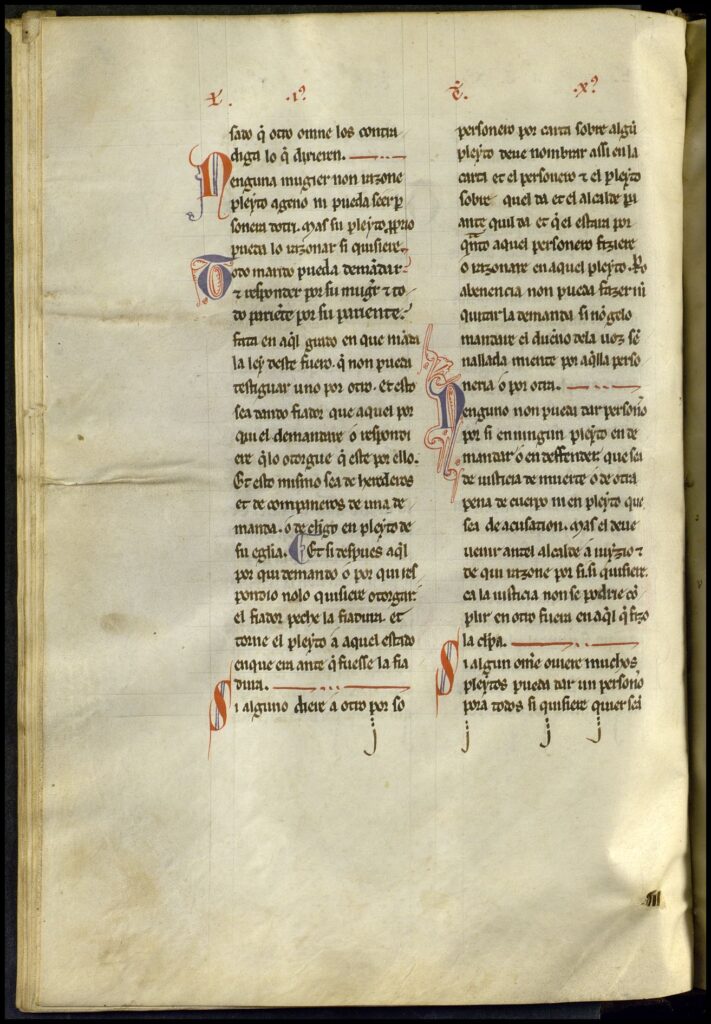
Pero hay otro elemento codicológico que nos interesa subrayar por su posible asociación más precisa con 1255. Sahagún era por aquel tiempo una villa de la merindad mayor de Castilla (Martínez Diez 1988: 110), como otras a las que posiblemente se les concedió de modo general el Fuero Real en la primavera de 1255 (Iglesia Ferreirós 1971: 950 y Craddock 1981: 384-385). Esto explicaría la intensísima actividad de la cancillería en el verano que siguió, durante el que se multiplicarían en ella los ejemplares del Fuero Real. Como ya se ha indicado, gran parte de esos libros iban destinados nominalmente a las villas (Martínez Diez 1988: 80), y para facilitar la producción en masa de estos se recurrió al método del formulario: se dejaba en blanco el espacio del nombre de la villa, que se rellenaría después. Esto explicaría que en ese punto del texto varios de los códices que se han conservado presenten el nombre sobre un raspado (Burgos en Z-III-13, siguiendo a Craddock 1981: 385) o anacolutos (Z-III-17, ibidem), así como quizá la gran variabilidad de las fórmulas genéricas (Martínez Diez 1988: 81). Pues bien, en el caso de BH MSS 345, su diseño se corresponde a todas luces con el de un formulario: se dejó ese hueco rellenado después con una letra de módulo superior a la del resto del texto, de diferente factura y con tinta de tono más oscuro. En cuanto a la rúbrica, ha de pensarse en una intervención posterior a la inserción del nombre de la villa destinataria, pues en ella no se aprecia el mismo fenómeno.
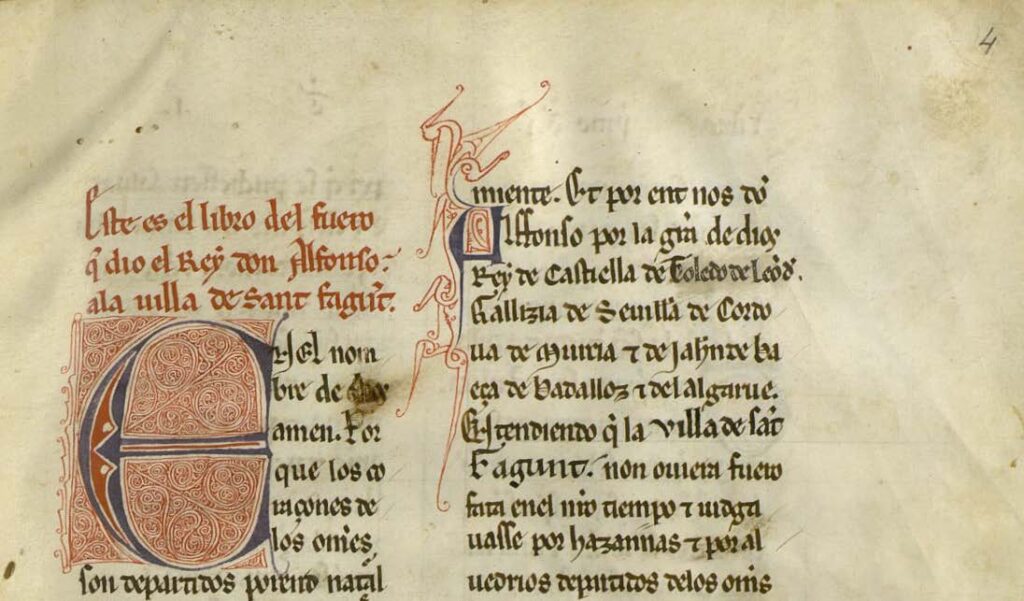
Confirma el carácter de formulario el hecho de que en la ley de las iglesias juraderas (2.12.3, f. 33r), se dejaron 7 líneas en blanco (12-18a) para que se rellenaran después con precisión de la iglesia en cuestión en función de la villa a la que se destinaba (Martínez Diez 1988: 86-87). Parece ser la misma mano del f. 4r la que rellena esas líneas y lo hace con la mención de la iglesia de Santiago, una de las principales de Sahagún en aquel momento (cf. imagen 3).

Por último, cabe señalar que el pergamino de todo el códice está taladrado en su vértice inferior izquierdo para pasar los hilos de seda de los que colgaría el sello de plomo que lo validaría como emitido en la cancillería real (cf. imágenes 3 y 4). Este parece ser uno de los métodos habituales de aposición de sellos en los cuadernos y libros alfonsíes (Ruiz Asencio 1988: 153).
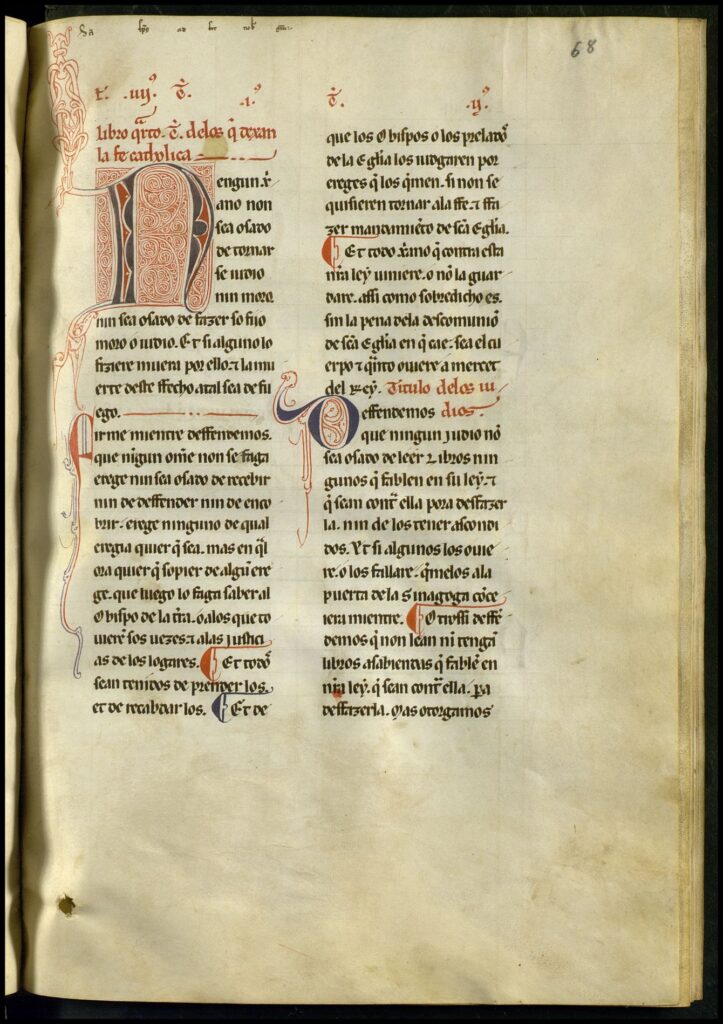
En definitiva, estimo que este testimonio del Fuero Real que viene ahora a sumarse a la lista de los que ya se conocían podría haber sido producido en 1255 a partir del original de la cancillería real. Corresponde ahora examinarlo en detalle desde un punto de vista estructural, paleográfico, codicológico y lingüístico para poder confirmar esta primera impresión. El trabajo en curso de Inés Fernández-Ordóñez y Elena Rodríguez Díaz (2021) sobre el manuscrito BNE MSS/7798 (BETA manid 3086), también recientemente identificado como un nuevo manuscrito antiguo del Fuero Real, podrá tener en cuenta BH MSS 345, evaluarlo a la luz del resto de la tradición manuscrita y valorar si se produjo, junto a otros de los testimonios conservados, como original múltiple. Entre estos podrían igualmente encontrarse los membra disiecta de un manuscrito custodiado en el Archivo de la Real Cancillería de Valladolid (BETA manid 5754) al que en este mismo blog dedicó Jerry Craddock un post en 2016 (The original manuscript of the Fuero real (Valladolid: Archivo de la Real Chancillería?).
Otra buena noticia es que la Biblioteca Histórica ‟Marqués de Valdecilla” está redactando actualmente un adendum a su catálogo y que rectificará el registro de este códice en breve, lo que ya ha sucedido en PhiloBiblon.
P.D. Precisamente a base de esta noticia de la profesora Castillo Lluch hemos podido rectificar los registros de PhiloBiblon, quitando el enlace de BETA cnum 9301 con el registro del Fuero de Sahagún (BETA texid 2443) para enlazar este testimonio correctamente con el registro del Fuero real (BETA texid 1006). [Charles Faulhaber]
Bibliografía
Barrero García, Ana María (1972), ‟Los fueros de Sahagún”, AHDE 42, 385-597.
Craddock, Jerry (1981), ‟La cronología de las obras legislativas de Alfonso X el Sabio”, AHDE 51, 365-418.
Fernández-Ordóñez, Inés y Rodríguez Díaz, Elena (2021), ‟Un manuscrito del siglo XIII del Fuero real”, comunicación presentada en “Alfonso X y el poder de la literatura (1221-2021)”. Congreso internacional, Iemyrhd, Universidad de Salamanca, 2021 (22-24 de noviembre).
Gómez Redondo, Fernando y Lucía Megías, José Manuel (2002), ‟Fuero Real”, en Alvar, Carlos y Lucía Megías, José Manuel, Diccionario filológico de literatura medieval española: textos y transmisión, Madrid, Castalia, 11-15.
Iglesia Ferreirós, Aquilino (1971), ‟Las Cortes de Zamora de 1274 y los casos de corte”, AHDE 41, 945-72.
Martínez Diez, Gonzalo (1988), Leyes de Alfonso X. II. Fuero Real (edición y análisis crítico), Ávila, Fundación Sánchez Albornoz.
Rodríguez Díaz, Elena (próxima publicación), ‟Elementos para fechar los códices leoneses y castellanos según los manuscritos datados (ss. XII y XIII)”, en Ángeles Romero Cambrón (ed.), La ley de los godos. Estudios selectos, Peter Lang.
Rodríguez Molina, Javier y Octavio de Toledo y Huerta, Álvaro (2017), ‟La imprescindible distinción entre texto y testimonio: el CORDE y los criterios de fiabilidad lingüística”, Scriptum digital. Revista de corpus diacrònics i edició digital en Llengües iberoromàniques 6, 5-68.
Ruiz Asencio, José Manuel (1988), ‟Estudio paleográfico”, en Gonzalo Martínez Diez, Leyes de Alfonso X. II. Fuero Real, Ávila, Fundación Sánchez Albornoz, 133-59.
New Book by Anthony Cascardi
![Francisco de Goya and the Art of Critique [cover]](https://update.lib.berkeley.edu/wp-content/uploads/2023/01/art-of-critique.png)
Francisco de Goya and the Art of Critique probes the relationship between the enormous, extraordinary, and sometimes baffling body of Goya’s work and the interconnected issues of modernity, Enlightenment, and critique. Taking exception to conventional views that rely mainly on Goya’s darkest images to establish his relevance for modernity, Cascardi argues that the entirety of Goya’s work is engaged in a thoroughgoing critique of the modern social and historical worlds, of which it nonetheless remains an integral part. The book reckons with the apparent gulf assumed to divide the Disasters of War and the so-called Black Paintings from Goya’s scenes of bourgeois life or from the well-mannered portraits of aristocrats, military men, and intellectuals. It shows how these apparent contradictions offer us a gateway into Goya’s critical practice vis-à-vis a European modernity typically associated with the Enlightenment values dominant in France, England, and Germany. In demonstrating Goya’s commitment to the project of critique, Cascardi provides an alternative to established readings of Goya’s work, which generally acknowledge the explicit social criticism evident in works such as the Caprichos but which have little to say about those works that do not openly take up social or political themes. In Francisco de Goya and the Art of Critique, Cascardi shows how Goya was consistently engaged in a critical response to—and not just a representation of—the many different factors that are often invoked to explain his work, including history, politics, popular culture, religion, and the history of art itself.
[from publisher’s site]
Anthony J. Cascardi is the Sidney and Margaret Ancker Distinguished Professor at the University of California, Berkeley. He is the author of numerous books, including The Consequences of Enlightenment; Cervantes, Literature, and the Discourse of Politics; The Subject of Modernity; and The Cambridge Introduction to Literature and Philosophy.
Francisco de Goya and the Art of Critique. Brooklyn: Zone Books, 2023.
PhiloBiblon 2023 n. 1 (fevereiro). Escrita de história, memória e gestão de um grupo familiar da nobreza portuguesa, séc. XV-XVI: descoberta, recuperação e estudo de manuscritos inéditos
Mª de Lurdes Rosa, Margarida Leme, Fábio Duarte e Miguel Ayres de Campos
Instituto de Estudos Medievais
Universidade Nova de Lisboa
Faculdade de Ciências Sociais e Humanas
VINCULUM ERC project
É com gosto e entusiasmo que partilhamos a descoberta de uma crónica nobiliárquica quinhentista, há muito perdida, e de dois inventários de arquivo de família com ela relacionados, e igualmente apenas há poucos anos recuperados – sendo o seu estudo integrado um trabalho inédito em curso.
Descobertas
O manuscrito da crónica nobiliárquica quinhentista, conhecido como Descendência e linhagem dos Castelo-Branco (doravante Crónica), está datado de 1588 e contém um longo texto de 261 fólios, em escrita elegante e cuidada. Em cento e dezasseis capítulos narra a história e a genealogia de um grupo familiar da nobreza portuguesa, os Castelo-Branco, estando dedicada a um dos seus expoentes ilustres na época, Duarte Castelo-Branco, conde do Sabugal, meirinho-mor e vedor da Fazenda. Encontra-se nas mãos de um colecionador privado, Doutor Miguel Ayres de Campos, que a cedeu de forma generosa ao projeto VINCULUM para ser estudada e editada.
Este projeto, financiado pelo European Research Council, tem com o objetivo o estudo do funcionamento das instituições de morgados e capelas (vinculação), em Portugal e seus territórios atlânticos, em perspetiva comparada com outros reinos do sul da Europa[i]. A forma como os grupos sociais que recorriam ao estabelecimento de vínculos para reforço da sua riqueza identitária e simbólica é uma das áreas de estudo de projeto VINCULUM, na qual materiais como as narrativas genealógicas e familiares tem grande relevo. Por acréscimo, o grupo familiar dos Castelo-Branco, que se organiza em diversos núcleos fortes, ricos e influentes na Corte portuguesa desde inícios do século XV, permite um dos mais interessantes estudos de caso do projeto.
Uma característica comum aos vários núcleos, entre os quais o dos Conde do Sabugal, foi a atenção aos arquivos e às práticas de gestão de informação das casas e das propriedades; uma outra, o cultivo das belas-letras e de vários tipos de saberes técnico – científicos. A literacia jurídica e contabilística permitiu-lhe aceder por gerações a cargos cimeiros da corte, ligados ao direito e à gestão do reino e dos bens régios, desde a Casa do Cível à vedoria da fazenda, passando pelo meirinhato-mor. A influência política dos Castelo-Branco permitiu que assumissem posições de relevo também no interior dos conselhos e juntas que auxiliaram monarcas portugueses e espanhóis. Entre os vários ramos, avultam senhores que cultivavam saberes como a astronomia, matemática e genealogia. A título de exemplo, tenha-se em consideração que Martinho, primeiro conde de Vila Nova de Portimão, foi íntimo do humanista italiano, residente em Lisboa, Cataldo Sículo; que no espólio fúnebre de um dos seus netos, morto em Alcácer Quibir, se encontrava “um livro de Luis de Camões” e um outro de Ludovico Ariosto; e que Manuel de Castelo-Branco, segundo conde de Vila Nova, foi autor de um livro com árvores genealógicas da aristocracia portuguesa, impresso em 1625, e de uma relação manuscrita acerca da história da sua linhagem.
A Crónica de que agora se trata espelha bem a riqueza de informação circulante no grupo, quanto ao seu passado e ao seu presente. São inúmeros os documentos e os livros citados, pelo que se vê de uma primeira análise. O conhecimento dos arquivos da família era especialmente prezado, e o estudo da Crónica será enriquecido com o de dois outros manuscritos, descobertos no âmbito de um dos projetos antecessores do VINCULUM, o projeto INVENTARQ[ii].
Também em mãos privadas, e generosamente disponibilizado para estudo, em 2015, ao grupo ARQFAM[iii] e, agora, ao projeto VINCULUM, é o Livro da Fazenda do Senhor Conde Meirinho-Mor e rendimento dela e dos seus papeis e outras lembranças. Códice in 4º, de 293 páginas numeradas, encadernado em pele, datado também de 1588, fez parte do Arquivo da Casa de Óbidos onde terá entrado pelo casamento da condessa de Sabugal e Palma com o 2º conde de Óbidos, em 1669. No arquivo da Casa terá permanecido mesmo depois de ter sido entregue, já no século XX, ao marquês de Santa Iria herdeiro dos condes de Óbidos. Está agora nas mãos de um colecionador privado, Arquiteto Jorge Brito e Abreu. Apresenta com a Crónica muitas semelhanças materiais, desde logo o tipo de letra; o seu restauro total, a finalizar em 2023, permitirá a leitura de páginas muito danificadas, e uma analise cuidada.
Já o Tombo do Cartório da Casa de Vila Nova de Portimão, atualmente à guarda do Centro de Documentação do Museu Municipal de Portimão, após compra no mercado livreiro, é proveniente da dispersão do arquivo da Casa de Abrantes pelos proprietários, ao longo da segunda metade do século XX. Ao que tudo indica, foi mandado fazer pelo segundo Conde de Vila Nova de Portimão, com sua direta intervenção; a redação final datará dos primeiros anos do século XVII, mas a empreitada deve ter começado nas últimas décadas da centúria anterior – o que o coloca em provável contemporaneidade com os dois documentos Sabugal. Foi editado e estudado por um dos atuais membros da equipa do projeto, Fábio Duarte, na sua tese de mestrado[iv], no âmbito de programa ARFAM, a decorrer na Faculdade de Ciências Sociais e Humanas da U. Nova de Lisboa desde 2010 e da área de formação em Arquivística Histórica da mesma instituição.
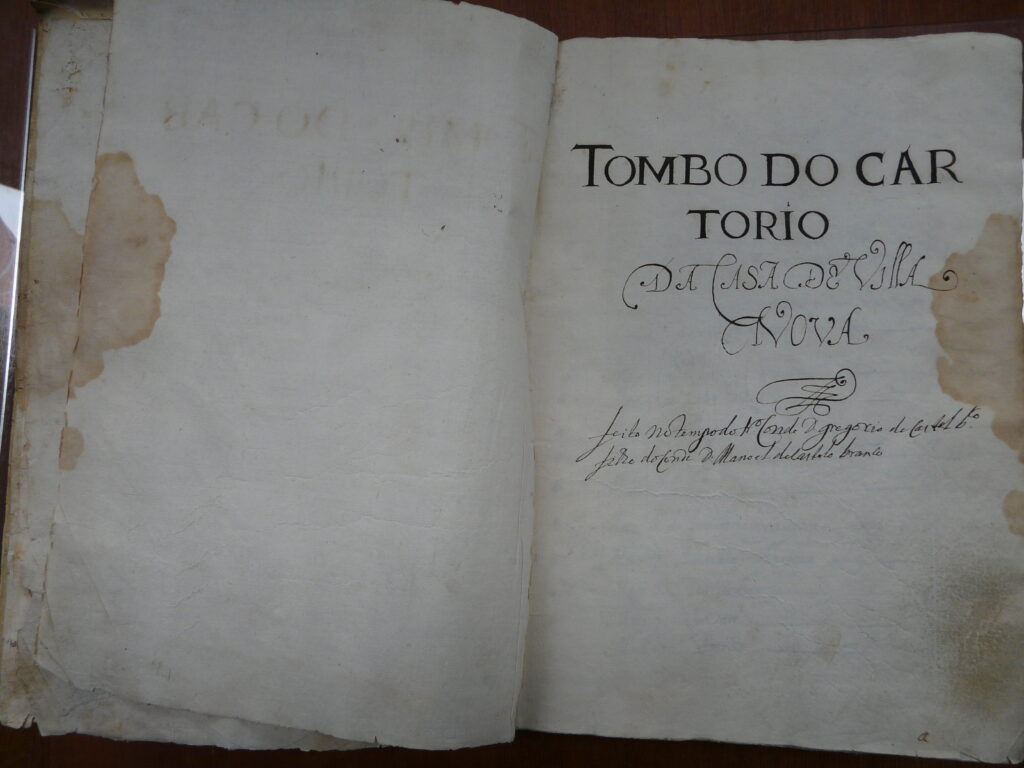
Embora não se saiba, igualmente, quem foi o responsável pela elaboração do Tombo do Cartório, note-se que esta, como as outras iniciativas já referidas, foi acompanhada de perto pelos membros da família Castelo-Branco e levada a cabo num breve intervalo de tempo. Não deixa de ser curioso apontar que, concomitantemente, em 1609, Gaspar Coelho Aranha, prior da vila da Atalaia, terminava a mando do terceiro conde de Sortelha, D. Luís da Silveira, genro do segundo conde de Vila Nova, a composição da Tabuada do cartório da Casa de Sortelha[v]. Aqui, uma vez mais, a reorganização de um arquivo familiar surgia a par da veiculação de uma ideia de memória nobiliárquica e da defesa do património conservado e transmitido durante gerações. O cura arquivista faz uma sugestão que poderá parecer estranha, ou megalómana, mas que afinal reflete a extrema importância conferida aos documentos familiares: o Conde deveria estabelece em Góis, vila principal entre as suas propriedades, um arquivo que albergasse os seus preciosos originais. Este arquivo chamar-se-ia, nem mais nem menos, do que «Torre do Tombo de Goez», e o cura relembra que o segundo conde, avô do atual, mandara fazer uma coleção de grande “tombos” semelhantes aos dos reis, onde registaram os seus bens e direitos. Num contexto alargado, estas composições e reorganizações de arquivos – que, como veremos, irão servir a Crónica – testemunham claramente de uma prática de escrita de gestão e de história-memória-genealogia dos Castelo-Branco e famílias afins, na qual avultam alguns longuíssimos testamentos que são, na verdade, “tratados de domesticidade”, contendo instruções aos sucessores sobre gestão política, económica, religiosa e afetiva das Casas e dos homens e mulheres por elas abarcados.[vi]
Autorias
Se para os dois inventários de Arquivo, as autorias – que se colocam, de resto, de modo diverso do que para um texto literário – estão parcialmente esclarecidas, quanto à Crónica tal não sucede ainda. No momento atual, colocamos mesmo a hipótese de 1588 ser a data não da redação, mas sim de uma cópia, feita para Duarte de Castelo-Branco, mesmo se o texto está dedicado àquele titular. O Prólogo pede vénia de erros de copista que não sabia ler latim, pelo que foi escrito após um exame da cópia, que teve aliás outros acrescentos e retificações expressamente referidos no Prólogo. Este terá sido por copiado após finalizado, incluindo a advertência quanto aos erros, pelo mesmo calígrafo do resto, e colocado no caderno inicial do livro.
Outros indícios apontam para escritas em diversos momentos, ou incorporações de outros textos. No capítulo 57 escreve-se “…foraõ aas mujtas moradas de casas da famosa rua Nova de Lisboa que ora são do meirinho moor dom Duarte de Castelbranco e lhe rendem mais de hum conto de reis”. A menção a Duarte Castelo-Branco é algo indireta, não se parecendo com outras que lhe são feitas como promotor da Crónica; sobretudo, não é referido como chamam “Conde”, título que já detinha em 1588.
Indubitável e impressionante é a quantidade de obras e documentos citados, bem como a qualidade da informação deles tirada, com frequência citações diretas. Transmite a clara noção que alguém estava a trabalhar num arquivo. Dizendo muitos dos capítulos ricos em citações documentais respeito a outros ramos que não os Sabugais, é forte a hipótese de uma empresa conjunta, ou pelo menos abertura dos vários arquivos. D. Manuel de Castelo-Branco, conde de Vila Nova de Portimão, acima referido, poderá ter sido nela central, pela sua mestria e fama como genealogista.
Já a entrega do trabalho em si ao um certo Luís Ferreira de Azevedo, que circula desde o século XIX, a partir de uma nota manuscrita de autor não identificado, no manuscrito, parece-nos pelo menos questionável. É conhecido pela entrada que lhe dedica Barbosa Machado na Biblioteca Lusitana (III: 94), a quem se deve de resto quase todas as informações que dele existem. Terá sido cronista-mor por um pequeno intervalo de tempo no início do séc. XVII e guarda-mor da Torre do Tombo. Na verdade, lendo o elenco de obras dado por Barbosa Machado, nada parece garantir que a Crónica dos Castelo-Branco se identifique com o trabalho aí citado. O que efetivamente se lhe atribui são genealogias de uma série de famílias, entre os quais os Castelo-Branco, “de quem dizia ser descendente”, o que parece indicar um trabalho produzido num espírito inteiramente diferente do da Crónica[vii].
Percursos
Estão por fazer os estudos dos percursos destes valiosos documentos. Terão feito parte da enorme quantidade de documentação de constituição e de gestão produzida pelos vários grupos familiares acima referidos, e outros semelhantes, ligados entre si por matrimónios fortemente endogâmicos que se concentraram ao longo dos séculos 17 e 18 em duas grandes Casas – Abrantes e Santa Iria. Os arquivos destas foram dispersos durante as duas centúrias seguintes, e estão hoje na sua maioria conservados em arquivos públicos e privados – embora exista ainda muito por descobrir, como prova os achados de que agora falamos.
Quanto à Crónica, dados até agora recolhidos permitem saber que fez parte da coleção do arquiteto bibliófilo Jose Maria Nepomuceno e vendida no leilão da mesma, em 1897, a Francisco Arthur da Silva, editor e livreiro[viii]. O catálogo não fornece, lamentavelmente, qualquer indicação sobre a proveniência e não se sabe, pois, como Nepomuceno a adquiriu. Terá feito parte do Arquivo e da Biblioteca da Casa de Óbidos, Palma e Sabugal, cujas histórias de constituição e dispersão estão também por fazer[ix]. O arquivo estaria ainda numa fase de vitalidade em 1836, quando é feito um extenso inventários dos seus milhares de documentos; encontra-se nele o Livro da Fazenda do Senhor Conde Meirinho-Mor (p. 416) mas não a Crónica, o que poderá simplesmente explicar-se pelo facto deste tipo de documentos serem antes conservados nas bibliotecas das Casas. A investigação preliminar conduzida nos inventários de livros existentes no Arquivo da Casa de Sta. Iria não produziu resultados.
Um escasso ano depois do leilão de Nepomuceno, em 1898, Francisco Arthur da Silva irá colocá-lo de novo em leilão, com o valor, a crer na indicação lateral, de 6.500 reis; não terá sido arrematado, pois o Apêndice mostra que ficou para o próprio[x]. A cópia do pequeno extrato existente na Biblioteca Pública de Évora e dado a conhecer por Rafael Moreira em 2022[xi], permite saber que o Arquiteto Nepomuceno a deixava consultar a amigos; desta consulta resultou a dita cópia parcial[xii]. Entre a venda por Francisco Arthur da Silva e o recente aparecimento em leilão, de 2016, há um hiato total.
Deve por fim mencionar-se uma sua versão abreviada num arquivo de família hoje depositado na Casa de Sarmento, em Guimarães. Intitulada Epílogo do livro da linhagem: dos de Castelobranco, é obra de um certo Bernardo Amaral Castelo-Branco. Provém do arquivo de uma casa da região vimaranense, a Casa do Costeado, e (ao contrário do que indica o catálogo online) foi feito já em 1610 – se bem que claramente por alguém que teve acesso à cópia da Crónica que agora nos ocupa.
Futuro
A Crónica e o Livro da Fazenda estão a ser alvo de trabalhos de restauro conservação, e serão posteriormente digitalizados para disponibilização pública. Fazem parte de um conjunto mais vasto de documentação cujo restauro e digitalização foram custeadas pelo projeto VINCULUM. A Crónica será apresentada, em conjunto com os restantes manuscritos, num seminário a realizar na FCSH.NOVA, a 28 de Abril de 2023, organizado pelo projeto, e de cujos resultados informaremos o blog!
[i] Entailing Perpetuity: Family, Power, Identity. The Social Agency of a Corporate Body (Southern Europe, 14th-17th Centuries) – ERC Consolidator grant 819734 .
[ii] Inventários de arquivos de família, sécs. XV-XIX: de gestão e prova a memórias perdidas. Repensando o arquivo pré-moderno EXPL/EPH-HIS/0178/2013 .
[iii] Arquivos de familia, Arquivos de comunidade(s). Arquivística, História, Herança cultural.
[iv] Fábio DUARTE, Herdar, Legar e Registar: o arquivo e o Tombo do Cartório da Casa de Vila Nova de Portimão. Degree: MA in History – specialization in Modern History and History of the Discoveries. FCSH-UNL, 2022.
[v] Análise em Maria de Lurdes ROSA, Penser et organiser les archives de famille, entre histoire et archivistique. In: Les archives familiales dans l’Occident médiéval et moderne: Trésor, arsenal, mémorial [en ligne]. Madrid: Casa de Velázquez, 2021 (généré le 16 septembre 2021).
[vi] O testamento do segundo conde é talvez o mais exemplar, e está publicado (ROSA, op. cit. p. 72); mas os testamentos manuscritos inéditos dos Castelo Branco são de idêntico talhe.
[vii] Neste aspeto não podemos, portanto, concordar com a atribuição feita por Rafael MOREIRA, O casamento da Infanta D. Beatriz em Sabóia (1521) e a mais antiga alusão a Gil Vicente. In: Anais de História de Além-Mar 21 (2020): 349-82 (p. 352-53).
[viii] Francisco Arthur da Silva (ed.), Catalogo da livraria do distincto bibliografico e bibliophilo José Maria Nepomuceno (…). Lisboa: Empreza Editora de Francisco Arthur da Silva, 1897 (lote 2187).
[ix] Margarida LEME– O Arquivo Costa no Arquivo Óbidos Palma Sabugal. In ROSA, Maria de Lurdes (org.) – Arquivos de família, séc. XIII-XX: que presente, que futuro?. Lisboa: IEM; CHAM; Caminhos Romanos, 2012, pp. 279-90. O arquivo foi disperso entre 1995 e 2004; tendo a maior parte sido adquirida em 1995, pelo ANTT, onde se encontra atualmente com o nome de Casa de Santa Iria.
[x] Francisco Arthur da Silva (ed.), Catalogo de uma boa colleçáo de livros raros, curiosos e manuscriptos de varias procedencias. Lisboa: Empreza Editora de Francisco Arthur da Silva, 1898 (lote 1124).
[xi] MOREIRA, O casamento. A descoberta do manuscrito integral da Crónica permitirá corrigir algumas das hipóteses deste artigo, decorrentes da versão disponível ao autor.
[xii] Foi também vendido no leilão de 1898 (catálogo cit. supra, lote 1099, p. 107), no qual é identificado como “cópia de letra moderna” do manuscrito genealógico dos Castelo-Branco.
PhiloBiblon 2023 n. 1 (February) Texts of history, memory and management by a family group of the Portuguese nobility, 15th-16th century: discovery, recovery and study of unpublished manuscripts
Mª de Lurdes Rosa, Margarida Leme, Fábio Duarte e Miguel Ayres de Campos
Instituto de Estudos Medievais
Universidade Nova de Lisboa
Faculdade de Ciências Sociais e Humanas
VINCULUM ERC project
It is with pleasure and enthusiasm that we share the discovery of a long-lost 16th-century noble chronicle and the inventories of two related family archives, both of them only recently recovered – their integrated study is an innovative work in progress.
Discoveries
The manuscript of the 16th-century noble chronicle known as Descendência e linhagem dos Castelo-Branco (hereinafter Crónica), dated 1588, contains a long text of 261 folios, in elegant and careful script. In one hundred and sixteen chapters, it narrates the history and genealogy of a family group of Portuguese nobility, the Castelo-Brancos, and is dedicated to one of its illustrious members of the period, Duarte Castelo-Branco, Count of Sabugal, meirinho-mor and vedor da Fazenda of the kingdom of Portugal. It is owned by a private collector, Doutor Miguel Ayres de Campos, who has generously loaned it to the VINCULUM project to be studied and edited.
This project, funded by the European Research Council, aims to study the functioning of the institutions of primogeniture (morgados) and chantry (endowed) chapels (vinculação/entailment) in Portugal and its Atlantic territories, in comparison with the same institutions in other kingdoms of southern Europe.[i] The way in which social groups used the establishment of vínculos/entails to reinforce their identity and symbolic wealth is one of the study areas of the VINCULUM project, in which materials such as genealogical and family narratives have great relevance. In addition, the Castelo-Branco family group, which comprised several strong, wealthy and influential nuclei at the Portuguese Court from the beginning of the 15th century, will be one of the most interesting case studies of the project.
A common feature of the various nuclei, including that of the Count of Sabugal, was the attention given to archives and the information management practices of the various houses and estates; another was the cultivation of the fine arts and various kinds of technical and scientific knowledge. Legal and accounting literacy allowed different members of the group to gain access for generations to top positions at court, linked to law and the management of the kingdom and royal property, from the House of the Civil Court to the treasury and the meirinhato-mor. The Castelo-Branco’s political influence allowed them to assume important positions within the councils and boards that assisted and advised Portuguese and Spanish monarchs. Among the various branches were lords who cultivated fields such as astronomy, mathematics, and genealogy. A few examples: Martinho, first Count of Vila Nova de Portimão, was a close friend of the Italian humanist and Lisbon resident, Cataldo Sículo; in the estate of one of his grandsons, killed at the battle of Alcácer Quibir, there was “a book by Luis de Camões” and another by Ludovico Ariosto; Manuel de Castelo-Branco, second Count of Vila Nova, was the author of a book with family trees of the Portuguese aristocracy, printed in 1625, and a handwritten account of the history of his lineage.
The Crónica reflects the wealth of information circulating in the group about its past and present. It cites numerous documents and books, as a preliminary analysis has shown. Knowledge of the family archives was especially prized, and the study of the Crónica will be enriched by that of two other manuscripts, discovered within the scope of one of VINCULUM’s predecessor projects, the INVENTARQ project[ii].
Also in private hands, and generously made available for study in 2015 to the ARQFAM group[iii] and now to the VINCULUM project, is the Livro da Fazenda do Senhor Conde Meirinho-Mor e rendimento dela e dos seus papeis e outras lembranças (Book of the Estates and property of the Lord Count Meirinho-Mor, his income, papers and other mementos). A codex in 4º, with 293 numbered pages, bound in leather, also dated 1588, it formed part of the House of Óbidos Archives, where it probably entered through the marriage of the Countess of Sabugal and Palma to the 2nd Count of Óbidos in 1669. It remained in the Óbidos archives even after they passed in the 20th century into the hands of the Marquis of Santa Iria, heir of the counts of Óbidos. It is now owned by a private collector, the architect Jorge Brito e Abreu. It has many material similarities with the Crónica, such as the script; the restoration of severely damaged pages, to be completed in 2023, will make possible a careful analysis.
The Tombo do Cartório do Casa de Vila Nova de Portimão, currently in the custody of the Centro de Documentação do Museu Municipal de Portimão, after purchase from the book trade, comes from the dispersal of the House of Abrantes archive by its owners during the second half of the 20th century. It was apparently commissioned by the second Count of Vila Nova de Portimão, with his direct intervention; the final redaction dates from the early 17th century, but the work must have begun in the last decades of the previous century – which makes it probably contemporary with the two Sabugal documents. It was edited and studied by one of the current members of the project team, Fábio Duarte, in his master’s thesis as part of the ARQFAM program,[iv] which has been underway at the Faculty of Social and Human Sciences at the Universidade Nova of Lisbon since 2010, and the training program in Historical Archival Studies at the same institution.

Although it is also not known who was responsible for preparing the Tombo do Cartório, it should be noted that this, like the other initiatives already mentioned, was closely monitored by members of the Castelo-Branco family and carried out in a short period of time. It is also interesting to note that, at the same time, in 1609, Gaspar Coelho Aranha, the prior of the village of Atalaia, was completing the Tabuada do cartório da Casa de Sortelha (Table of contents of the Cartulary of the House of Sortelha), ordered by the third Count of Sortelha, D. Luís da Silveira, son-in-law of the second Count of Vila Nova.[v] Here, once again, the reorganization of a family archive went hand in hand with the propagation of an idea of noble memory and the defense of a heritage preserved and passed down for generations. The archivist makes a suggestion that may seem strange, or megalomaniac, but which ultimately reflects the extreme importance attached to family documents: the Count should establish in Góis, the main town among his estates, an archive that would house his precious originals. This archive would be called the “Torre do Tombo de Goez,” and the chaplain recalls that the second Count, grandfather of the current Count, had ordered a collection of large “tombos,” cartularies, similar to those of kings, in which they recorded their properties and rights. In a broader context, these compositions and reorganizations of archives – which, as we shall see, underpin the Crónica – are clear evidence of a practice of management by writing, and history-memory-genealogy of the Castelo-Branco and related families, which includes some very long wills that are, in fact, “treaties of domesticity,” containing instructions for successors on the political, economic, religious and affective management of the Houses and the men and women they encompassed.[vi]
Authorship
If for the two archival inventories, the authorship – which is different from that of a literary text – is partially understood, this is not yet so for the Crónica. At the present time, we even hypothesize that 1588 is the date not of composition but of a copy made for Duarte de Castelo-Branco, despite the fact that the text is dedicated to him. The Prologue asks for forgiveness for the errors of a copyist who could not read Latin – which points to the fact that it it was written after the rest of the text, which has other additions and rectifications expressly mentioned in the Prologue. This initial part was thus probably copied after the Crónica was finished, with the warning about the errors, by the same scribe as the rest, and placed in the book’s initial gathering.
Other indications point to writings at various times or the incorporation of other texts. In chapter 57 one finds “…foraõ aas mujtas moradas de casas da famosa rua Nova de Lisboa que ora são do meirinho moor dom Duarte de Castelbranco e lhe rendem mais de um conto de reis.” […there were many dwellings in the famous Rua Nova of Lisbon that now belong to the merinho mor lord Duarte de Castelobranco and bring him in as rent more than 100,000 reis]. The reference to Duarte Castelo-Branco is somewhat indirect, not like others that mention him as promoter of the Crónica; above all, he is not mentioned as “Count,” title he already held in 1588.
Undoubtedly impressive is the quantity of works and documents cited as well as the quality of the information taken from them, often direct quotations. It conveys the clear notion that someone was working in an archive. As many of the chapters rich in document citations concern branches other than the Sabugais, the hypothesis of a joint venture, or at least consultation of various archives, is strong. D. Manuel de Castelo-Branco, Count of Vila Nova de Portimão, mentioned above, may have been central to it, given his mastery and fame as a genealogist.
In contrast, the attribution of the text to a one Luís Ferreira de Azevedo, which originated in note in an unidentified hand on the manuscript and has been circulating since the 19th century, seems to us at least questionable. Ferreira de Azevedo is known by the entry dedicated to him by Barbosa Machado in the Biblioteca Lusitana (III: 94), to which we owe almost all the information known about him. He might have been chronicler-major for a short time in the early 17th century and head keeper of the Torre do Tombo. In fact, reading the list of works given by Barbosa Machado, nothing seems to identify the Crónica with the titles cited. What is effectively attributed to him are genealogies of a series of families, among them the Castelo-Branco family, “from whom he claimed to be descended,” which seems to indicate a work produced in an entirely different spirit from that of the Crónica.[vii]
Provenance
Studies of the provenance of these these valuable documents have yet to be undertaken. They would have formed part of the enormous quantity of documentation produced by the various family groups mentioned above and others like them, linked together by strongly endogamous marriages, which came to be concentrated in the 17th and 18th centuries in two great Houses – Abrantes and Óbidos. Their archives were dispersed over the following two centuries and are today mostly preserved in public and private archives – although there is still much to be uncovered, as proven by the discoveries we are discussing now.
As for the Crónica, data gathered so far allows us to know that it came to be part of the collection of the bibliophile architect Jose Maria Nepomuceno and was sold at his auction in 1897 to Francisco Arthur da Silva, publisher and bookseller.[viii] The sale catalogue unfortunately gives no indication of provenance and it is not known, therefore, how Nepomuceno acquired it. It must have been part of the Archive and Library of the House of Óbidos, Palma and Sabugal, the histories of whose constitution and dispersal are yet to be written.[ix] The archive was still active in 1836 when an extensive inventory of its thousands of documents was made; in it can be found the Treasury Book of the Lord Count Meirinho-Mor (p. 416) but not the Crónica, which can be explained quite simply by the fact that this type of documents were kept in the House libraries, not the archives. Preliminary research conducted on the book inventories in the Casa de Santa Iria Archive, however, was fruitless.
A year after Nepomuceno’s auction, in 1898, Francisco Arthur da Silva put the Crónica up for auction again, with a reserve price, according to the handwritten note on the margin of the auction, of 6.500 reis; it seems that it did not sell, since the Appendix shows that it was left to the owner.[x] The copy of the small extract held in the Biblioteca Pública de Évora and published by Rafael Moreira in 2022, allows us to know that Nepomuceno used to let friends consult the Crónica[xi]; which was apparently the source of this partial copy.[xii] There is a total gap between the sale by Francisco Arthur da Silva and the Crónica’s recent appearance at auction in 2016.
Finally, we should mention the existence of an abridged version of the Crónica in a family archive now held at Casa de Sarmento. Entitled Epílogo do livro da linhagem: dos de Castelobranco (Epilogue of the book of the lineage: dos de Castelobranco), it is the work of a certain Bernardo Amaral Castelo-Branco. It comes from the archive of a house in the Guimarães region, the Casa do Costeado, and (contrary to what the online catalog indicates) was made as early as 1610 – clearly by someone who had access to the copy of the Crónica.[xiv]
Future
The Crónica and the Livro da Fazenda are undergoing conservation work and will later be digitized for public availability. They are part of a larger set of documents whose restoration and and digitization were sponsored and funded by the VINCULUM project. The Crónica will be presented and studied, along with the remaining manuscripts, in a seminar to be held at the Faculty of Social and Human Sciences of the Universidade Nova de Lisboa, on April 28, 2023, organized by the project, and of whose results we shall inform the blog!
[i] Entailing Perpetuity: Family, Power, Identity. The Social Agency of a Corporate Body (Southern Europe, 14th-17th Centuries) – ERC Consolidator grant 819734.
[ii] Inventários de arquivos de família, sécs. XV-XIX: de gestão e prova a memórias perdidas. Repensando o arquivo pré-moderno. Project EXPL/EPH-HIS/0178/2013.
[iii] Arquivos de familia, Arquivos de comunidade(s). Arquivística, História, Herança cultural.
[iv] Fábio DUARTE, Herdar, Legar e Registar: o arquivo e o Tombo do Cartório da Casa de Vila Nova de Portimão. Degree: MA in History – specialization in Modern History and History of the Discoveries. FCSH-UNL, 2022.
[v] Studied in Maria de Lurdes ROSA, Penser et organiser les archives de famille, entre histoire et archivistique. In: Les archives familiales dans l’Occident médiéval et moderne: Trésor, arsenal, mémorial [en ligne]. Madrid: Casa de Velázquez, 2021 (généré le 16 septembre 2021).
[vi] The second count’s will, perhaps the most exemplary, is published (ROSA, Penser. p. 72); but the Castelo Branco’s unpublished handwritten wills are of identical style.
[vii] In this aspect we cannot therefore agree with the authorship attribution made by Rafael MOREIRA, O casamento da Infanta D. Beatriz em Sabóia (1521) e a mais antiga alusão a Gil Vicente. In: Anais de História de Além-Mar 21 (2020): 349-82 (p. 352-53).
[viii] Francisco Arthur da Silva (ed.), Catalogo da livraria do distincto bibliografico e bibliophilo José Maria Nepomuceno (…). Lisboa: Empreza Editora de Francisco Arthur da Silva, 1897 (lote 2187).
[ix] Margarida LEME– O Arquivo Costa no Arquivo Óbidos Palma Sabugal. In ROSA, Maria de Lurdes (org.) – Arquivos de família, séc. XIII-XX: que presente, que futuro?.Lisboa: IEM; CHAM; Caminhos Romanos, 2012, pp. 279-90. The archive was dispersed between 1995 and 2004 and most of it was acquired in 1995, by the ANTT, where it is currently located under the name of Casa de Santa Iria.
[x] Francisco Arthur da Silva (ed.), Catalogo de uma boa colleção de livros raros, curiosos e manuscriptos de varias procedencias. Lisboa: Empreza Editora de Francisco Arthur da Silva, 1898 (lote 1124).
[xi] MOREIRA, O casamento. The discovery of the full manuscript of the Crónica will allow us to correct some of the assumptions in this article, which arose from the version available to the author.
[xii] It was also sold at the Silva 1898 auction (catalog cited above, lot 1099, p. 107), in which it is identified as a “modern handwritten copy” of the Castelo-Branco genealogical manuscript.
New Book by Darcy Grimaldo Grigsby
This book addresses the unique and profound indeterminacy of “Creole,” a label applied to white, black, and mixed-race persons born in French colonies during the nineteenth century.
“Creole” implies that the geography of one’s birth determines identity in ways that supersede race, language, nation, and social status. Paradoxically, the very capaciousness of the term engendered a perpetual search for visual signs of racial difference as well as a pretense to blindness about the intermingling of races in Creole society. Darcy Grimaldo Grigsby reconstructs the search for visual signs of racial difference among people whose genealogies were often repressed. She explores French representations of Creole subjects and representations by Creole artists in France, the Caribbean, and the Americas. To do justice to the complexity of Creole identity, Grigsby interrogates the myriad ways in which people defined themselves in relation to others. With close attention to the differences between Afro-Creole and Euro-Creole cultures and persons, Grigsby examines figures such as Théodore Chassériau, Guillaume Guillon-Lethière, Alexandre Dumas père, Édouard Manet, Edgar Degas, the models Joseph and Laure, Josephine Bonaparte, Jeanne Duval, and Adah Isaacs Menken.
Based on extensive archival research, Creole is an original and important examination of colonial identity. This essential study will be welcomed by specialists in nineteenth-century art history, French cultural history, the history of race, and transatlantic history more generally.
[from publisher’s site]
Darcy Grimaldo Grigsby is Richard and Rhoda Goldman Distinguished Professor in the Arts and Humanities at the University of California, Berkeley. She is the author of Enduring Truths: Sojourner’s Shadows and Substance; Colossal: Engineering the Suez Canal, Statue of Liberty, Eiffel Tower, and Panama Canal; and Extremities: Painting Empire in Post-Revolutionary France.
Creole : Portraits of France’s Foreign Relations During the Long Nineteenth Century.
University Park, Pennsylvania: The Pennsylvania State University Press, 2022.
New Book by Michael Iarocci
Widely acknowledged as a major turning point in the history of visual depictions of war, Francisco de Goya’s renowned print series The Disasters of War remains a touchstone for serious engagement with the violence of war and the questions raised by its artistic representation.
The Art of Witnessing: Francisco de Goya’s Disasters of War provides a new account of Goya’s print series by taking readers through the forty-seven prints he dedicated to the violence of war. Drawing on facets of Goya’s artistry rarely considered together before, the book challenges the notion that documentary realism and historical testimony were his primary aims. Michael Iarocci argues that while the depiction of war’s atrocities was central to Goya’s project, the lasting power of the print series stems from the artist’s complex moral and aesthetic meditations on the subject.
Making novel contributions to longstanding debates about historical memory, testimony, and the representation of violence, The Art of Witnessing tells a new story, print by print, to highlight the ways in which Goya’s masterpiece extends far beyond conventional understandings of visual testimony.
[from publisher’s site]
Michael Iarocci is professor of Modern Spanish Literature and Culture (18th-21st centuries) in the Department of Spanish & Portuguese and the Associate Dean of Arts and Humanities at UC Berkeley. He received his Ph.D. from the University of Pennsylvania. Comparative and Transatlantic Hispanic Studies. Literature and geopolitics. Aesthetics and ideology. Visual culture. His previous books include Enrique Gil y la genalogía de la lírica moderna (Juan de la Cuesta, 1999), and Properties of Modernity: Romantic Spain, Modern Europe and the Legacies of Empire (Vanderbilt University Press, 2006).
The Art of Witnessing: Francisco de Goya’s Disasters of War.
Toronto: University of Toronto Press, 2023.
New Book by Henrike Christiane Lange
In this book, Henrike Lange takes the reader on a tour through one of the most beloved and celebrated monuments in the world – Giotto’s Arena Chapel. Paying close attention to previously overlooked details, Lange offers an entirely new reading of the stunning frescoes in their spatial configuration. The author also asks fundamental questions that define the chapel’s place in Western art history. Why did Giotto choose an ancient Roman architectural frame for his vision of Salvation? What is the role of painted reliefs in the representation of personal integrity, passion, and the human struggle between pride and humility familiar from Dante’s Divine Comedy? How can a new interpretation regarding the influence of ancient reliefs and architecture inform the famous “Assisi controversy” and cast new light on the debate around Giotto’s authorship of the Saint Francis cycle?
Illustrated with almost 200 color plates, including individual images of each scene in the narrative cycle, this volume invites scholars and students to rediscover a key monument of art and architecture history and to see it with fresh eyes.
“Henrike Lange’s book on Giotto’s Arena Chapel changes our view of this key work of painting in Italy around 1300.” – Ulrich Pfisterer, Director of the Zentralinstitut für Kunstgeschichte; LMU, Munich
“Dr. Lange’s discovery is so all-encompassing and so to the point… It is now possible to bridge the Anglo-Saxon and Italian views of Giotto where once they were thought to be irreconcilable: a great step forward for the field.” – Laurence B. Kanter, Chief Curator, Yale University Art Gallery
“Lange shows how the theme of triumph is at once central and inexhaustible in the Arena Chapel – its structure, imagery, physical presence, context. The book is itself a vivid triumphal procession of ways of seeing, scholarship, discovery, and critical thinking.” – Randolph Starn, UC Berkeley History
“Lange’s discovery is completely new and original: an entirely convincing case built on the foundations of history, literature, philosophy, political iconography, and theology.” – Andrew Stewart, UC Berkeley History of Art and Classics
“Lange has the rare ability to build bridges for the reader with her command of European languages that allow her to translate and integrate the vast libraries of research on Giotto written in different linguistic and scholarly traditions. The very elegance and clarity of her writing suggest that Lange’s will be a contribution of real significance and will have quite an impact on medieval and Renaissance studies.” – Giuseppe Mazzotta, Sterling Professor of Italian, Yale University
“At its heart Lange’s impressive book relays an intensely visual argument. It is a scholarly triumph in itself to explicate the intimate relation – architectural, political, theological – between the Arena Chapel and a famous Roman prototype, the Arch of Titus. All scholars and students of the period will need to engage this powerful historical proposition and its implications for Italian Trecento visual culture. But Lange also finds the full measure of Giotto’s triumph as a painter.” – Whitney Davis, UC Berkeley History of Art
[from publisher’s site]
Henrike Christiane Lange is Associate Professor in History of Art and Italian Studies at the University of California, Berkeley. Lange completed her Magister Artium at Universität Hamburg, Germany, before earning her PhD at Yale University. The present book is the culmination of two decades of research at sites, archives, and collections across Europe.
Giotto’s Arena Chapel and the Triumph of Humility.
Cambridge: Cambridge University Press, 2023.
Sourcing the Past with the Dizionario Biografico degli Italiani
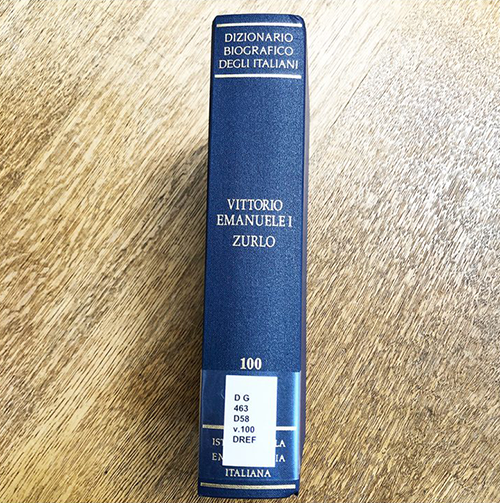
The publication of the hundredth (and final) volume of the Dizionario Biografico degli Italiani (Dbi, Biographical Dictionary of the Italians) last year by Istituto della Enciclopedia Italiana (Istituto Treccani) is a momentous occasion that may have been overshadowed by the global pandemic when libraries were shuttered and cataloging backlogs amassed. In the spirit of other European projects such as the Dictionary of National Biography (UK), the Diccionario biografIíco español (Spain), and the Allgemeine Deutsche Biographie (Germany), this ambitious biographical dictionary was conceived in 1925 with national-patriotic criteria in mind during the first phase of the National Fascist Party’s consolidation of power in Italy. Because of setbacks during and following World War II, the first volume did not appear in print until 1961 yet nearly every year thereafter, at least one or two volumes were added to the evolving reference set.
The enterprise endeavored to include the most illustrious figures in the history of Italy from the fall of the Western Roman Empire to the present day. Responding to the needs of the digital age, these 40,000 scholarly entries with sources and bibliographies have been made freely available online (but not free of ads) and integrated with other reference works they publish. While new entries are added to the online portal which also comprises Enciclopedia dell’Italiano, Dizionario di Filosofia, Enciclopedia Machiavelliana, Enciclopedia del Cinema, etc., entries in the print tomes are subject to the era in which they were authored. One of the conditions for inclusion in the Dbi is that of being deceased. According to its current director Raffaele Romanelli, the work is doomed to bear witness only to the past if worthy cultural figures are overlooked. He explains, “I have here a ready list of Italians who passed away this year: Alberto Arbasino, Franca Valeri, Rossana Rossanda. Will they all be destined for exclusion?”
The neo-Hegelian idealist philosopher, educator, and fascist politician Giovanni Gentile, who was also director of the Enciclopedia Italiana, referred to the work as “the golden book of the Italian stock.” In recent years, the notion of relevance has expanded to the world of business, technology, even of media and fashion, and includes previously unthinkable icons such as gay activist playwright Mario Mieli, notorious pornstar Moana Pozzi, and soccer heroes Enzo Bearzot and Dino Viola. According to Romanelli, there really never was a predefined canon. “To give an idea of the criterion, I would have liked to have included Pinocchio and Don Abbondio, non-existent but fundamental,” he quipped. Naturalized citizens such as the Swiss botanist Daniel Bovet and the mezzo-soprano Cathy Berberian of Armenian-American descent are included but entries for women remain overall at an appalling four percent. There are entries for fiction writers Natalia Ginzburg and Elsa Morante but it could be a long time before we see one for famous living writers such as Elena Ferrante. In 2015, the influential feminist art critic Carla Lonzi was added to the online version. Fans of the late philosopher, writer, and linguist Umberto Eco who died in 2016 still awaits an entry in the Dbi.
UC Berkeley is one of three dozen libraries across the country with the complete print set of 100 volumes. Most research libraries canceled their standing orders somewhere along the way. But what does this mean now when updates are not possible in a standard reference work such as this? Does the whole work become a cultural relic forever frozen in the epoch in which it was created? The lack of a critical lens and blatant exclusion of worthy cultural, political, scientific, and historical figures is reason enough to keep updating the work, illuminating the overlooked both from Italy’s past and recent years. While promises of forthcoming appendices and the technological capability of Trecanni to insert new entries and revise old ones in the online edition, the fate of this national reference work and others like it remains unknown. Students continue to rely, as many of us do for quick look-ups, on Wikipedia as the golden age of cumbersome print reference works sunsets. The burning question we should be asking ourselves is not what we would do without Wikipedia but what would we do without these print reference treasures, or knowledge bases, that constitute its foundation?
Sources consulted
Dizionario Biografico degli Italiani. Istituto della Enciclopedia Italiana fondata da Giovanni Treccani, https://www.treccani.it/biografico. Accessed 31 March 2022.
“Dizionario biografico degli italiani – Immagini.” YouTube, 14 December 2010.
https://youtu.be/pul4bOZ7lAs. Accessed 31 March 2022.
Fiori, Simonetta. “L’ultimo degli italiani.” La Repubblica, 12 December 2020. https://ricerca.repubblica.it/repubblica/archivio/repubblica/2020/12/12/lultimo-degli-italianiRobinson23.html. Accessed 31 March 2022.
“Istituto della Enciclopedia Italiana.” Enciclopedia on line. Istituto della Enciclopedia Italiana fondata da Giovanni, https://www.treccani.it/enciclopedia/istituto-della-enciclopedia-italiana. Accessed 31 March 2022.
Neveu, Bruno. “Biographie et historiographie: Le Dizionario biografico degli italiani.” Journal des Savants, vol. 1, no. 1, 1971, pp. 32–67, https://doi.org/10.3406/jds.1971.1240. Accessed 31 March 2022.
Sofri, Adriano. “Un monumento di civiltà: il centesimo volume del Dizionario biografico italiano.” Il Foglio, 23 December 2020. https://www.ilfoglio.it/piccola-posta/2020/12/23/news/un-monumento-di-civilta-il-centesimo-volume-del-dizionario-biografico-italiano-1588368. Accessed 31 March 2022.

Originally published in the European Studies Section Newsletter of the Association of College and Research Libraries.

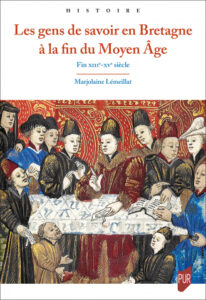
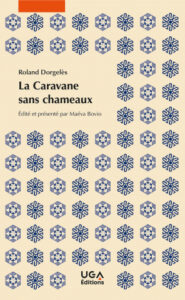
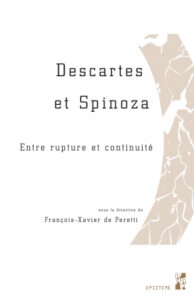
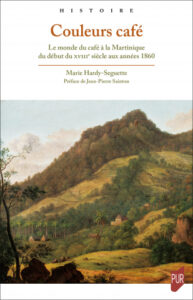
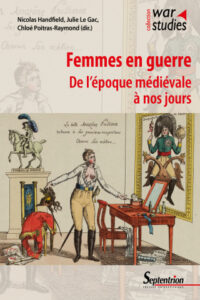
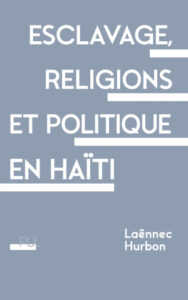
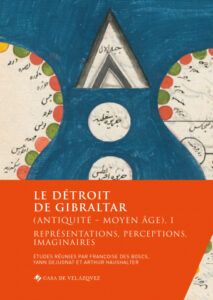
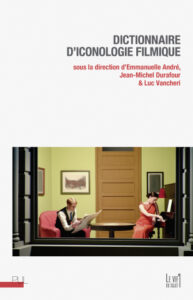
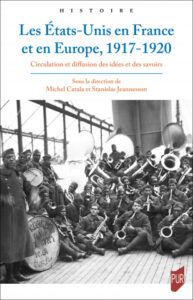
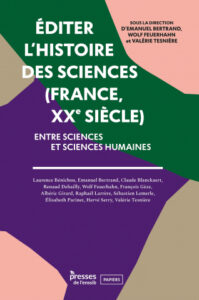
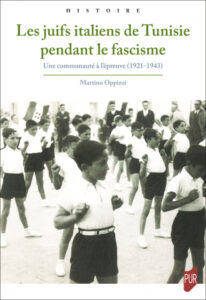

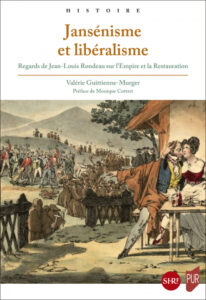
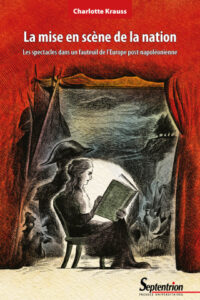
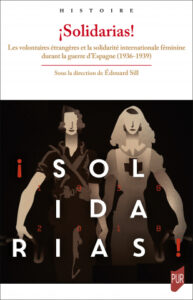
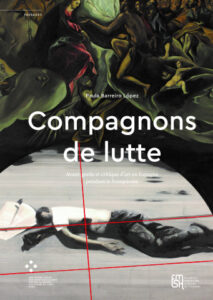
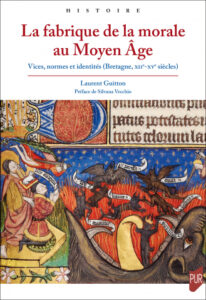
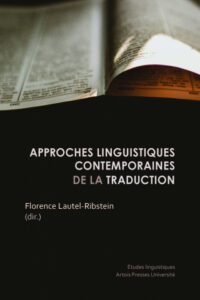
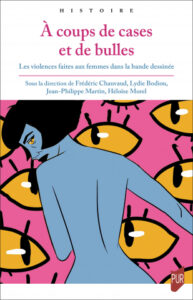
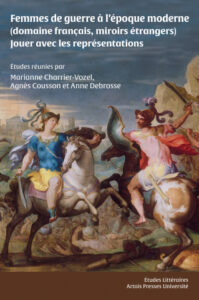
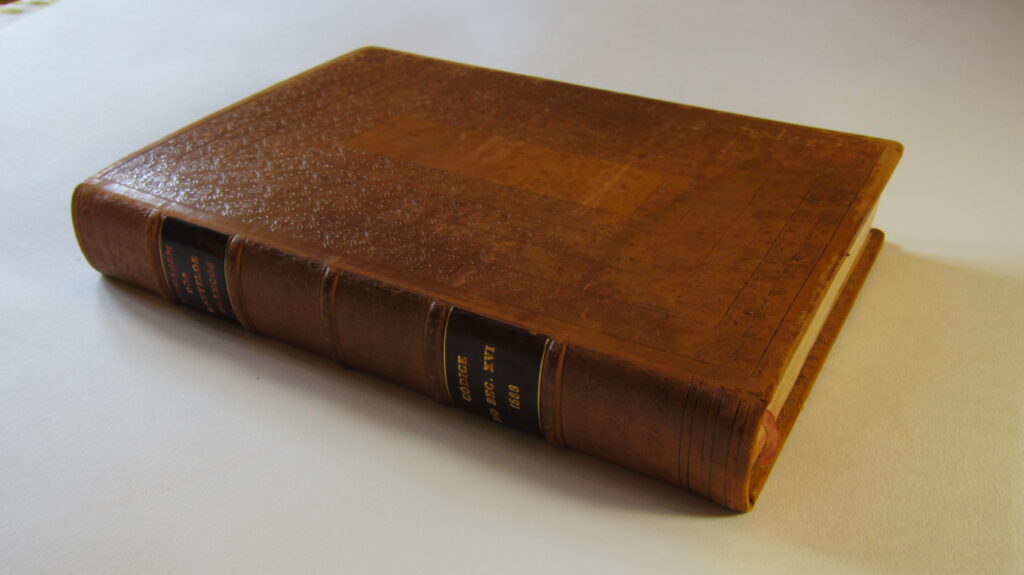
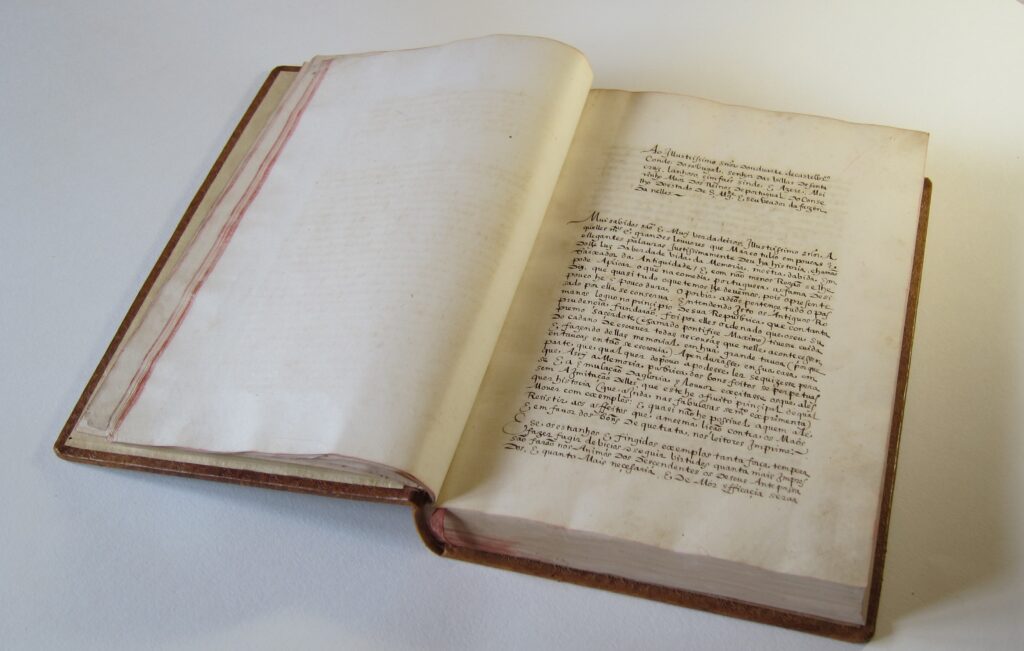
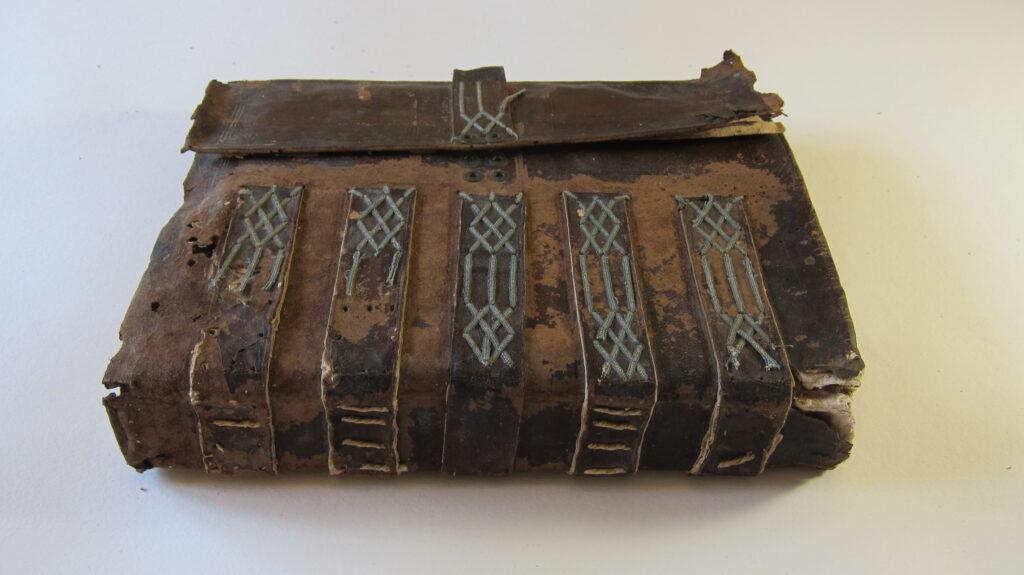
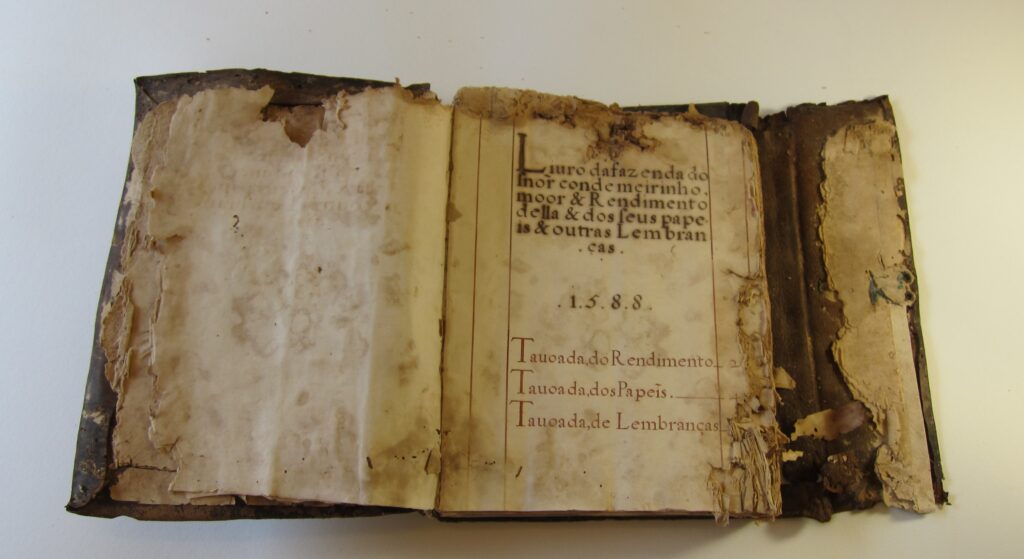
![Creole: Portraits of France’s Foreign Relations During the Long Nineteenth Century [book cover]](https://update.lib.berkeley.edu/wp-content/uploads/2023/01/CREOLE.jpg)
![The Art of Witnessing: Francisco de Goya's Disasters of War [cover]](https://update.lib.berkeley.edu/wp-content/uploads/2023/01/art-witnessing.png)
![Giotto's Arena Chapel and the Triumph of Humility [book cover]](https://update.lib.berkeley.edu/wp-content/uploads/2023/01/giotto.jpg)